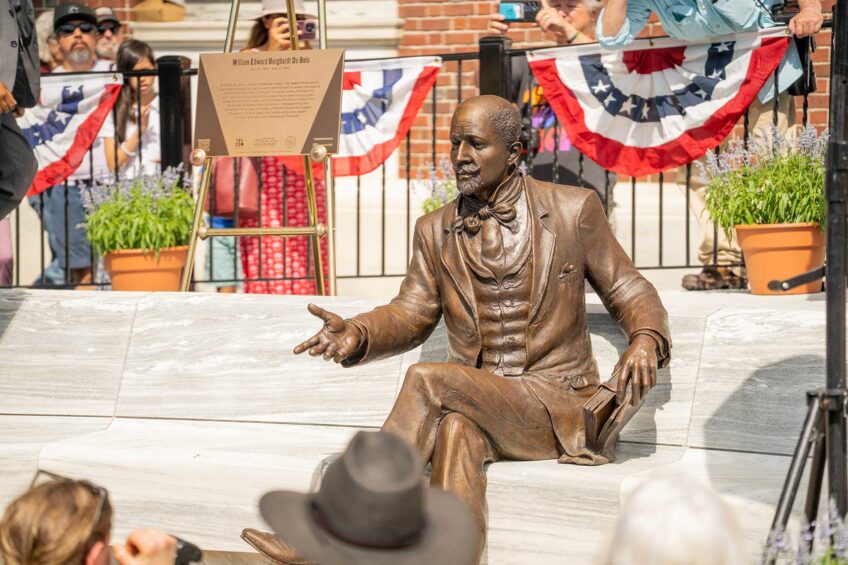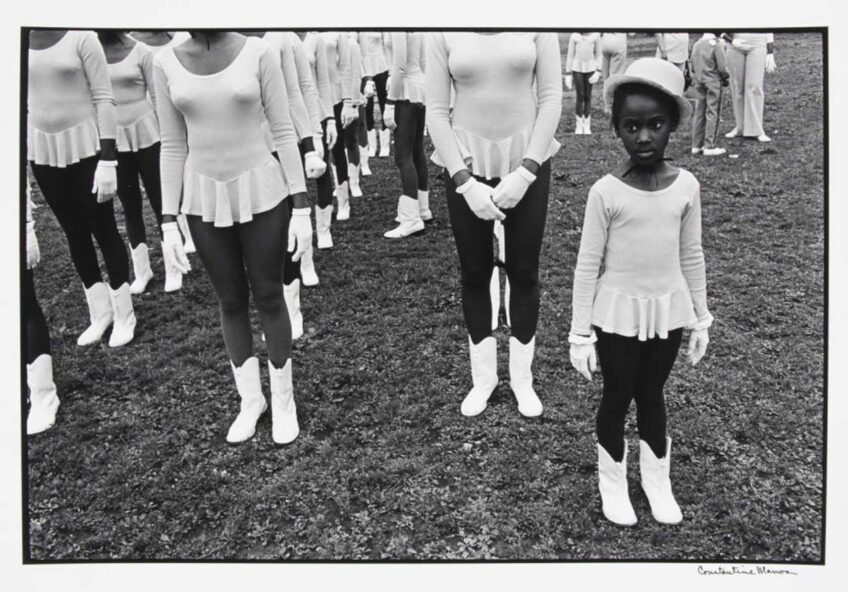‘Diary of a Tap Dancer’ — Ayodele Casel evokes history and magic of tap

Tap dance, like jazz, is conducive to self-expression. The dancer’s body creates visual and aural images that can express an emotion and tell a story. Many leading tap dancers of color are telling stories that draw on a shared heritage of African American history and an art form that began in slavery.
Weaving together her own life story as a tap dancer with the story of earlier female tap dancers of color is Ayodele Casel, an actor, tap dancer and choreographer and currently a Radcliffe Fellow. Hailed by Gregory Hines as “one of the top young tap dancers in the world, male or female,” and cited by The New York Times as a 2019 breakout star, Casel recently performed her new work of dance theater, “Diary of a Tap Dancer,” which she is developing during her yearlong residency at the Radcliffe Institute for Advanced Study in Cambridge.
At the February performance, in a packed hall on the campus, Tomiko Brown-Nagin, the Institute dean, introduced Casel. Accompanying Casel in segments of her hour-long work were dancers Andre Imanishi and Andrea (Dre) Torres. Following her performance, Casel responded to audience questions and held an on-stage conversation with Jeneé Osterheldt of The Boston Globe.
A jubilant presence on stage whose Yoruba first name means “joy,” Casel describes herself as both black and Puerto Rican, and a child of the Bronx.
In “Diary,” Casel orchestrates screen projections, spoken and sung vocals, and tap dance. A radiant and eloquent storyteller with words, Casel also makes her case with tap, its movement and sound a form of evidence, punctuation and declaration that turns her elevating message into an all-out sermon.
“Tap is magic,” says Casel, attired in a black T-shirt that says “Until we all win” and a black jacket and slacks. “It changed my life.” While addressing the audience, her feet stomp and ripple, while behind her, a screen shows a panorama of family pictures from her childhood and beyond as well as images of tap ancestors and mentors.
She describes her mission to “shine a light on women hoofers,” particularly black dancers, and recites a litany of names of such dancers from the 1920s through the ’50s. “I have an intense need, desire and responsibility to speak their names,” Casel says. “They were entrepreneurs, choreographers, and dancers.” But they were forgotten, because they were black women. “My story would be no different if I didn’t share my own story,” Casel says. “Our stories matter. Our time on earth matters. Don’t wait for an invitation to tell your story.”
Her audience applauds in assent, and Casel proceeds to tell her own.
During elementary school, Casel lived for a few years with her grandmother in Puerto Rico, where most kids didn’t look like her and she prayed every night to have straight hair. She got into fistfights with boys. “My teachers called me Muhammad Ali,” Casel says, noting that her fighting spirit would serve her well when she made her way into the man’s world of tap dance.
Back in the Bronx, she discovered tap during a high school course in movie history. “I fell in love with Cary Grant, Rita Hayworth, Clark Gable, Fred and Ginger,” says Casel, while tapping. “After school, I rented movies and had a daily dose of Hollywood glamour.”
Behind her, a black-and-white film shows her in a cocktail dress dancing with a male partner to the 1935 Irving Berlin classic, “Cheek to Cheek.” Gliding across the stage, she echoes her onscreen movement.
Recalling her first tap lesson, Casel says that she went to Payless and bought tap shoes “exactly like Ginger’s, with tiny heels and bows. I walked into the first class in style.”
A turning point for Casel was Savion Glover’s mid-90s Broadway hit, “Bring in ’da Noise, Bring in ’da Funk.” She says, “I was completely awed to first see young blacks take their space in a theater with such power and authenticity.” She spent hours observing dancers at Funk University, Glover’s all-male training ground for the show, and became the first woman in his dance company.
Describing how she came to understand tap as “an art form that carries a history of black people,” Casel starts a rhythmic stomp. Offstage, Imanishi answers with a counterrhythm and the two enter a propulsive, intricate dialogue. Onscreen are photographs of 18th-century legislation forbidding slaves from having drums. Imanishi and Torres join Casel onstage. Rotating in a circle while pounding their feet in unison, the three create a thundering demonstration of power.
Casel then segues into a lighter, syncopated beat, adding vocal scat to her footwork, and begins a poetic tribute to the many black women who made their way into the male-dominated world of tap dance. She recalls hoping to arrange a visit with Hollywood pioneer Jeni LeGon (1916-2012), who danced with Bill “Bojangles” Robinson. When Casel phoned, LeGon said, “Oh my. I thought they’d forgotten me.” As she softly taps, Casel looks up the list of dancers’ names on the screen and reads excerpts from her research on their accomplishments. “These taps are my words,” concludes Casel. “I will not be written out of history. Everyone who sees me will see them.”






